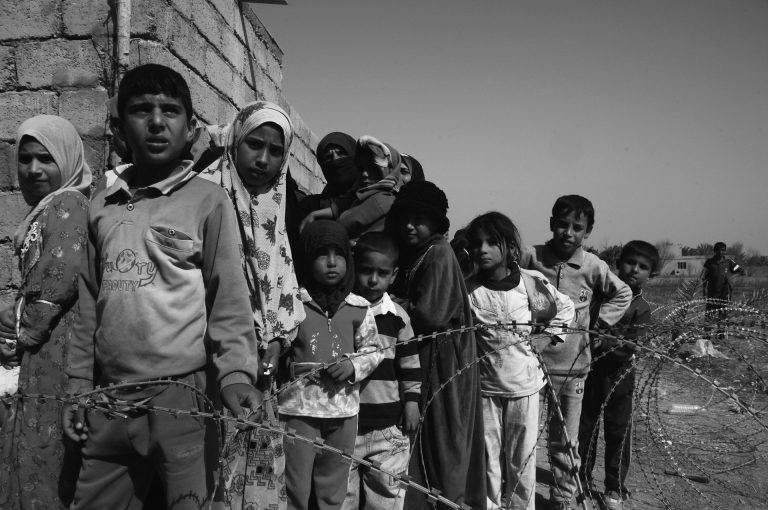“My mothers seek respite
From years of abject poverty
Their sons a bright future
And the right to pursue prosperity“
Ethiopia Speaks – A Poem by Billene Aster Seyoum

On July 19, 2021, the Ethiopian government announced the impounding and topping of GERD, in defiance of American and Egyptian demands. This suggests that the second filling of GERD is now complete, and the 2 installed hydraulic turbines can generate electricity for domestic use and export to Kenya. Nonetheless, there remains a question as to whether this second filling added 3 billion cubic meters (BCM) or 13.5 BCM of water.
The first filling allowed GERD to retain about 4.9 BCM of water, and a wire release reports that the second filling impounded 13.5 BCM, which approximates the current impoundment capacity to 18.4 BCM. However, an editorial published by Egypt Independent claims that the announcement belies a discouraging reality, which is that the second filling was not a success, and that the Ethiopian government is using this felicitous announcement to boost Ethiopian pride at a time when the government is losing on the political, military, social, and economic fronts.
The editorial based its assertion on remarks made by Hany Raslan who is associated with the Al-Ahram Center for Sudan and Nile Basin Affairs. Hany – who in August 2017 deplored Egyptians for having “out-dated understandings” of a fast-changing world – claimed that “Ethiopia failed miserably in completing the second filling” and that the total volume of water in GERD as of July 20, 2021, was “approximately seven billion cubic meters (for the first and second filling together)” and not the projected 18.5 BCM. He stated that this has happened because of infrastructural failure, which he attributed to “failure to complete the ramp work in the middle corridor” (ibid). These assertions contradict information published by the Ethiopian Press Agency, which stated that GERD “has reached 80 percent completion”.

Two spillways discharge water following the second filling of GERD.
PHOTO CREDIT: Abiy Ahmed Ali via Twitter.
At full operational capacity, GERD is expected to produce 6000 megawatts from its 16 power generation plants, with each plant equipped with a set of Francis hydraulic turbines and an electricity generator that can generate 375 megawatts of electrical power. In 2017, the plan was to install a combination of 400MW and 375MW turbines in a 7:1 ratio so as to realize a maximum power output of 6350MW from 16 turbines.
Electricity Generation
What is known at the moment is that GERD can generate electricity if any of its installed hydraulic turbines are equipped to operate an electricity generator.

What is needed is to open any of its sluice gates (or control gates) so that water rushes down the penstock towards the tailrace and terminal downstream outlet. This enables the pressurized water to flow into the volute of the hydraulic turbine and set its runner blades in motion, which causes the turbine shaft to spin, and then transmit this motion to the rotor shaft of the connected electric generator. This generator is the (energy) transducer that converts the rotational kinetic energy of the rotor into electricity, which can then be transmitted through power lines.
To the left is a schematic drawing of a conventional hydroelectric dam. CREDIT: Wikimedia.
If the power transmission lines are connected to the national electricity grid, then the generated power can reach Ethiopian homes and businesses, while allowing for the possibility of power export. However, according to Hany Raslan, GERD cannot start generating power yet because “the two turbines at the bottom of the dam will not work”. This assertion awaits validation in the coming months, but what is indisputable is that GERD must one day produce electricity for export.
GERD Powering Ethiopia’s Diplomacy
Electricity export is important as it approves the decision by President Uhuru Kenyatta to support Abiy Ahmed despite strong opposition from hostile anti-Abiy elements in NIS and KDF, who at times lobbied for Egypt. Moreover, it proves wrong the anti-Ethiopian elements in Kenya’s government who described GERD as a grand illusion that is being marketed using the twin nationalist hashtags: #ItsMyDam and #FillTheDam. So far, Kenyatta has maintained the conviction that regional partnership is mutually beneficial to the people of Kenya and Ethiopia, while allowing the Egyptian government to sell – via the Kenyan media – their views, policies, and expectations of GERD to the Kenyan people.
The success of GERD gives President Kenyatta the ability to brush off objections raised about the Ethiopia-Kenya partnership. He can do this now by showing detractors that Ethiopians have proved their full ownership of GERD by filling it, despite the odds they faced. This can also weaken the network of KDF and NIS officers who, out of disloyalty to the presidency and desire to see Kenyatta’s administration fail, have been advocating for souring of ties with Ethiopia, in favor of working with rebels and insurgents fighting against Addis Ababa.
Relatedly, Ethiopia needs Kenya to buy power from GERD so that it can obtain hard currency, which it desperately needs as political warfare strangulates its main sources of income of hard (foreign) currency. This also puts the anti-Ethiopia clique in Kenya (and its public-facing private intelligence firms) at odds with the Kenyan government because GoK will be giving GoE hard currency that it can use to fight rebels that are supported by the anti-Ethiopia clique.
Grand Inga Complex
To counter Ethiopia’s power export to East African nations, Egypt has been promoting the Grand Inga complex in the Democratic Republic of Congo (DRC) as an alternative to GERD. Like Ethiopia’s GERD, DRC’s Grand Inga mega-dam complex is a hydropower megaproject, which was mooted in the 1960s, and aims to build 8 hydropower dams along the Congo River, which is the deepest and second-longest river in Africa. The Grand Inga complex has been marketed as the largest hydropower project in the world with a projected power output of 50 Gigawatts (GW), which would overshadow GERD’s planned power output of 6 GW, and allow DRC to export power to different nations that are as far apart as South Africa and Egypt.
Egypt’s plan to invest in Congo’s infrastructural projects has been presented as furthering the spirit of pan-Africanism with Hani Raslan remarking that this cooperation allows Egypt to boost its presence in the Great Lakes region, as well as enables it to “have greater influence (in the region), which contributes to strengthening Egypt’s plan to focus on Africa”.
So far, GERD is almost operational, while only Inga I and Inga II hydroelectric dams operate at very low output.
Can GERD need Pumped Storage?
As alluded to earlier, power generation occurs when water flowing through the penstock has enough kinetic energy to turn the turbine. This can only happen if the amount of water in the reservoir is high enough so that the volume of water above the penstock inlet stores enough potential energy that can turn the propeller blades of the turbine. For this reason, the water level in the reservoir is key to the efficiency and reliability of power generation. This will also impact future use of the dam, and can explain why Ethiopia refuses to enter into agreements with Egypt that will expose GERD’s operations to limitations enforced by rulings made through international arbitration.
To begin with, Egypt wants Ethiopia to limit water volume in the reservoir so that Egypt receives 40 BCM of Nile Waters per annum. Secondly, Egypt is concerned that rapid filling of GERD will reduce water volume in the Aswan High Dam (AHD) whose penstocks were built to operate with a high reservoir capacity. The total reservoir capacity of AHD is 162 BCM with siltation reducing the effective volume of water that the reservoir can hold. Nonetheless, the amount impounded has allowed Egypt to irrigate about 83.03 million acres of land with low-salinity water.
On the other hand, Ethiopia aims to achieve optimal use of GERD as soon as possible, and plans to release 31 BCM of Blue Nile’s water to the downstream nations each year, while USG calls for Ethiopia to release 37 BCM per annum. As it stands, Ethiopians expect GERD to one day hold 74 BCM of water and the penstocks have been built to operate with a hydraulic head of 74 BCM.
Another issue of concern relates to peak power demand if Ethiopia manages to export power, or domestic power consumption exceeds current projected estimates. One of the ways that GERD can effectively manage to produce electricity to meet peak electricity demand is to use pumped storage.
Pumped storage requires water that has exited the downstream outlet to be pumped to a series of storage pools that are located above the power generation units. During peak power demand, the water from these pools (which have higher potential energy per unit volume as compared to reservoir water) is allowed to flow into the penstocks so as to increase power generation. Relatedly, this means that pumped storage will reduce the amount of water that will reach the downstream nations of Sudan and Egypt.
For Ethiopia, any agreement that requires strict obligation, high delegation, and high precision will tie its hands regarding sovereign use of GERD as a national resource, mostly because the agreement will impose usage restrictions, or even disallow pumped storage.
GERD and Food Output
Apart from exporting electricity, GERD gives Ethiopia the opportunity to irrigate its lands and increase agricultural output. This is important for Ethiopian farmers who aspire to grow crops during the dry season, or when rains fail during a wet season. This means that the dam can help address the issue of crop failure that has caused untold suffering to Ethiopians. A food-secure Ethiopia will greatly improve food security in the Horn of Africa region.
Additionally, the operationalization of GERD expresses the strong will of the Ethiopian people, who can now boast of having the largest hydroelectric power plant and second-largest dam in Africa, which were financed by Ethiopians – further strengthening the nationalist pride of a people who can proclaim to have a people’s dam.
People’s Dam Causes Ire in Egypt
For Egypt, the filling of GERD heralds a permanent reduction of water inflow into the Aswan High Dam and the downstream Nile Valley basin, and this can create a potential backlash against the American government which has so far failed to prevail on the Ethiopian government to enter into a legally-binding agreement with Egypt over management of transnational water resources.


To date, Ethiopia has shown no deference to the Egyptian leadership, and this reduces the prestige of the Egyptian military that dominates the government. This could lead Egyptians to question the government narrative that Egypt is a powerful nation that can project power for the benefit of Egyptians. TesfaNews noted that “Egypt’s military government failed to prove to its people they are capable of protecting Egypt’s vital interests” . Also, Taha Sakr asked: “What is Egypt’s future strategy (concerning GERD), diplomacy or military strikes?”, and noted that “no clear strategy has yet been presented regarding how Egypt will ensure that its share of the Nile water will be secured”.
In an unverified audio recording posted on Ana Asef Ya Rais Facebook page, a person claimed to be former President Hosni Mubarak is heard lamenting that Egypt has lost its stature as a powerful nation. He further states that Ethiopia could not try to build GERD when he was in power because he could have ordered Tupolev Tu-160 warplanes to destroy the dam (during the initial phases of its construction). Still, Egypt has medium-range ballistic missiles, including the aged Condor missiles that have a range of 1000 kilometers. These missiles can reach GERD if they are launched from Sudan or Tigray region, though the air defense nest around GERD can destroy most of the missiles that enter GERD’s airspace. This implies that any attempt to decapacitate GERD using purely military means is currently infeasible.
Can GERD Cause Egypt to Potentially Lose US$71.34 billion?
As long as water losses due to evaporation continue in the Sudd swamps, the White Nile will continue to contribute less than 17% of water to the Egyptian Nile basin. As expected, this leaves Egypt totally dependent on Ethiopia for its Nile Waters. As Egypt’s Ambassador to the United States, Motaz Zahran, bluntly put it in April 2021, “the massive Grand Ethiopian Renaissance Dam…would disrupt a primary source of water for Egypt and Sudan“, and further referring to the Red Line set in March 2021 by the Egyptian government, warned that Ethiopia was wasting its last chance at dispute resolution.
Making an accusation that would later be voiced by Ahmed Hafez of the Egyptian Foreign Ministry, Ambassador Zahran accused Ethiopia of following an “established policy of unilaterally exploiting…international rivers (like the Blue Nile)”, and stated that this would lead to “choking off an essential supply of water (which) would exponentially increase the dangers posed by climate change in the region”(ibid).
Ambassador Zahran claims that filling GERD will create climate refugees and environmental migrants in Egypt and Sudan. To drive the point home, he provides statistics obtained from an Impact Study done by Deltares, which concluded that unilateral filling of GERD can reduce the volume of water reaching the Egyptian Nile basin by 123 BCM, and the loss of every BCM would force “290,000 people out of work”, destroy “more than 321,230 acres of cultivated land”, cause a “loss of $430 million of agricultural production”, and increase food import by US$150 million (ibid). If this projected loss of water capacity represents the volume of water that is to be used for agriculture, then the following extrapolation can be made from the statistics provided by Zahran. This allows for a rough calculation of the worst-case agro-economic scenario for Egypt if GERD becomes operational. However, this calculation does not quantify the degree of loss of carrying capacity of the Nile Valley Basin.
Based on extrapolation, unilateral filling of GERD can impact 35,670,000 people in Egypt whose livelihoods depend on the Nile waters, as well as devastate 39,511,290 acres of arable land, which would cost Egypt about US$52.89 billion in agricultural losses, while increasing food importation by US$18.45 billion. To put this into economic numbers, unilateral filling of GERD can cost Egypt tens of millions of lost jobs (which will reduce economic output), while increasing national expenses, which approximates the cumulative losses to US$71.34 billion.
This is a potential loss, and the actual cost to Egypt could be more or less depending on how Egypt and Ethiopia handle their misunderstandings concerning GERD. For Egypt, consideration of such a potential loss would lead Egyptian policymakers to question the helpfulness of the Egypt-USA relationship on matters concerning the Nile River. For the US, there is a need to showcase the expediency of its relationship with both Egypt and Ethiopia, and the method chosen so far is to wage augmented political warfare against the nationalistic government of Abiy Ahmed Ali.
Further Reading
Brief Introduction to Hydroelectric Dams: How They Work, Advantages & Disadvantages.
The featured image shows GERD after impounding and over-topping following completion of the second filling. It was posted in the Twitter Timeline of Ethiopia’s Prime Minister.







